Porto-North-Portugal.com
The best independent guide to Porto
Porto-North-Portugal.com
The best independent guide to Porto
Porto Tram Linha 1: The Historic Riverside Tram for 2025
The Linha 1 is the traditional tram route connecting Porto's historic centre with the charming Foz district that sits at the mouth of the Douro River.
The line follows the northern bank of the Douro River, passing through historic neighbourhoods and old dockyards before travelling beneath the impressive Ponte da Arrábida bridge.
Making the trip special are the delightful 90-year-old Brill-28 carriages. These are not replicas, but authentic trams, beautifully restored with their original polished wood interiors, gleaming brass controls, and the traditional driver's bell.
A ride on the Linha 1 is a highly recommended activity for a trip to Porto, providing both a charming historic experience and a practical way to travel to the lovely Foz district. This guide will provide a detailed overview of the route, along with fare information and practical advice for your journey.
Related articles: Walking tour of Porto - Top 10 Porto
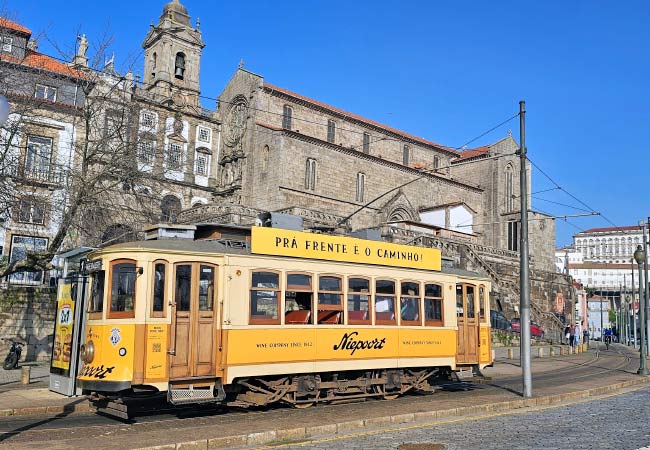
The tram departs from the gothic Igreja de São Francisco, the most spectacular church in Porto
Linha 1: Fares, Timetable & Practical Tips
A single journey on the historic tram costs €6.00 for adults and €3.50 for children (ages 4 to 12), with tickets purchased directly from the driver upon boarding. For a return trip on the same day, a ‘2 trips’ ticket offers better value at €8.00.
For those planning multiple tram journeys, a 2-day unlimited pass is also available, costing €12.00 for adults and €6.00 for children. It is important to note that these tickets are exclusively for the historic tram network and are not valid on any other form of public transport in Porto.
The Linha 1 tram service departs approximately every 20 minutes, with operating hours generally between 9am and 8pm. For the latest schedule, it is always advisable to check the official STCP (Sociedade de Transportes Colectivos do Porto) website: www.stcp.pt
The tram route can get very busy during the peak season, and it is best to travel early in the morning or later in the day to avoid the crowds. For the best experience and an uninterrupted view of the Douro River, try to get a seat on the south facing side of the tram. The main appeal is the ride itself, so if you find yourself at the end of a long queue, consider waiting for the next tram, as there is little enjoyment if you end up standing.
The entire Linha 1 is covered by the 500 bus service (Praça da Liberdade to Matosinhos), which is the main source of public transport from central Porto to Foz and onwards to Matosinhos. If the queues for the tram are too long consider taking the bus instead, which is also cheaper (€1.95 for a single).
Porto Tram Linha 1 Route Map and Stops
Below is a map detailing the tram route (note: zoom in out to see all of the points)
Stops along the route: 1) Infante 2) Alfândega 3) Monchique 4) Cais das Pedras 5) Museu do Carro Elétrico 6) Bicalho 7) Ponte Arrábida 8) Encosta da Arrábida 9) Ouro 10) Fluvial 11) Dona Leonor 12) Cantareira 13) Passeio Alegre
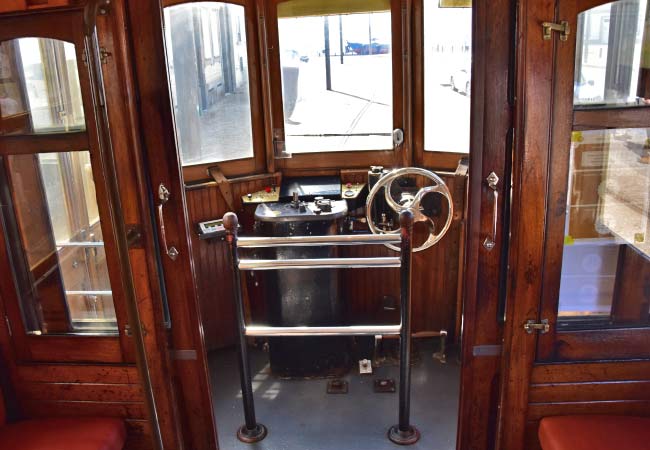
The interior of the tram dates from the 1930s
Key Stops and Sights Along the Linha 1 Route
While the tram makes 13 stops on its riverside journey, the real magic of the route is best experienced by focusing on a few key locations. These are the places that offer the most character, history, and beauty, transforming your tram ride into a proper exploration of Porto's waterfront.
Stop 1 - Infante
The Linha 1 tram begins its route at the Infante stop, located at the base of the magnificent Igreja de São Francisco. This is the bustling heart of historic Porto, a UNESCO World Heritage site where colourful, ancient houses crowd the riverfront. As this is the starting point, it is where most passengers board.
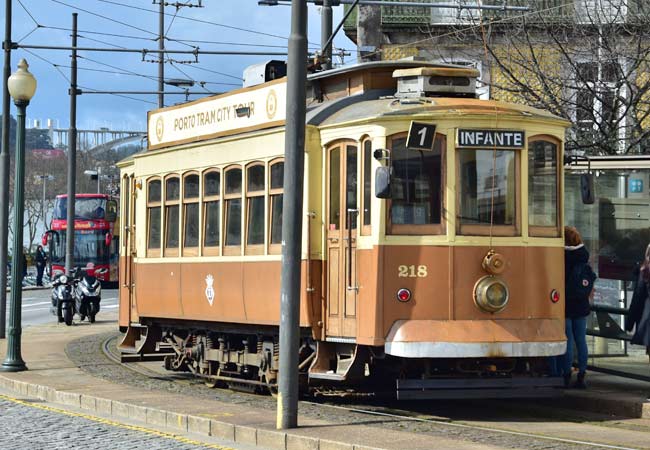
Stop 13 - Passeio Alegre (Foz)
Passeio Alegre is the final stop on the line and your destination in the charming Foz district. You arrive at the edge of the Jardim do Passeio Alegre, a lovely shaded park with fountains and a mini-golf course. From here, it is a short and pleasant walk to the mouth of the Douro River, where you can see the Farol de Felgueiras lighthouse standing against the Atlantic waves. The park is also the gateway to the pleasant beachfront promenade and the sandy beaches of Praia do Ouriço and Praia dos Ingleses.
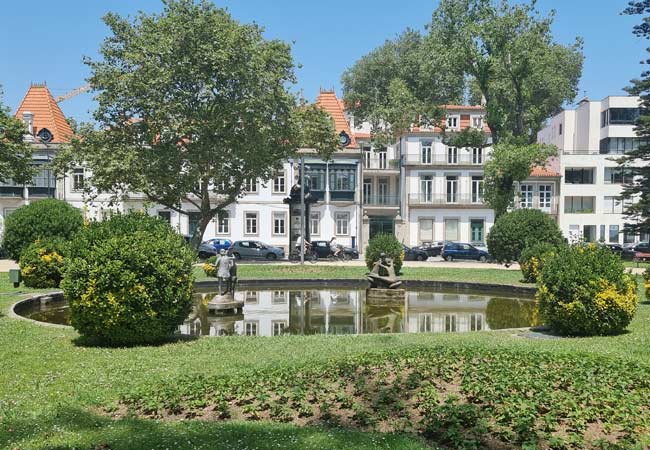
Stop 12 - Cantareira
Perhaps the most atmospheric stop on the route, Cantareira is a small, traditional fishing harbour that feels a world away from the city centre. Fishermen mend their nets beside colourful boats that bob gently in the sheltered water, offering a glimpse into a way of life that has endured for centuries. The stop's hidden treasure is the tiny Farol de São Miguel-o-Anjo, Europe's oldest lighthouse, a remarkable piece of history hidden in plain sight.
Exiting the tram at Cantareira and walking the final section to Passeio Alegre is a highly recommended way to experience the best of the Foz district.
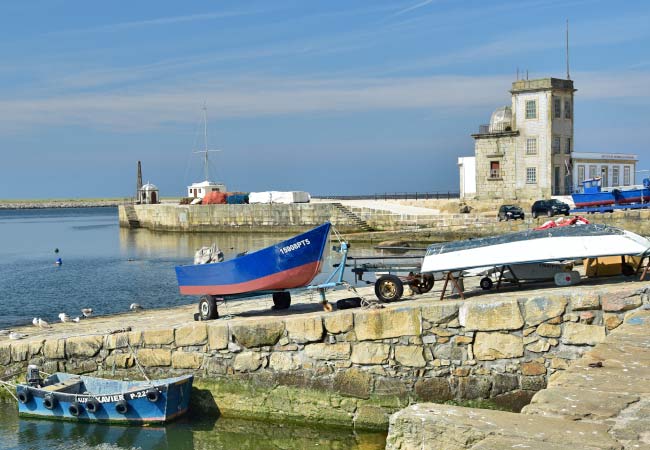
Stop 5 - Museu do Carro Elétrico
For anyone charmed by the vintage carriages, this stop is a must. It is located directly outside the Tram Museum (Museu do Carro Elétrico) and the working STCP tram depot. The museum is housed inside the former Massarelos power plant that once generated electricity for the entire network. A visit provides a fascinating look into the golden age of Porto's trams.
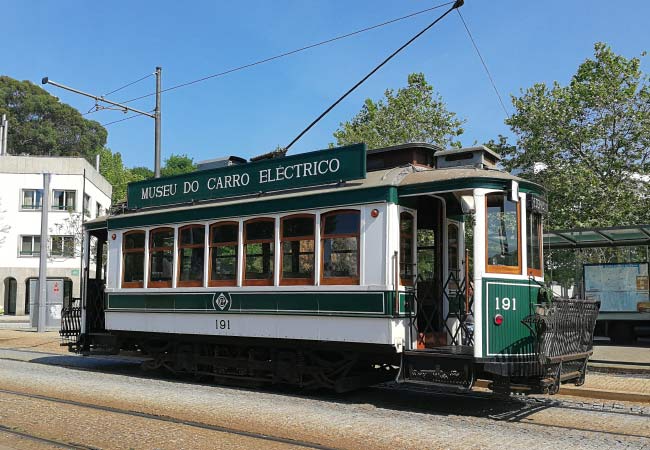
Stop 2 - Alfândega
The Alfândega stop is opposite Porto’s impressive 19th-century customs house. The building now serves as a congress centre and houses the Museum of Transport and Communications. The nearby World of Discoveries is also a popular interactive museum, especially for families. If you are feeling energetic, a steep climb up the hill will take you to the Miradouro Bandeirinha da Saúde, a viewpoint with fantastic views over the river.
Stop 7 - Ponte Arrábida
Here, the tram passes directly beneath the mighty Ponte da Arrábida, an engineering marvel whose concrete arch was once the longest of its kind in the world. The bridge has a single, unsupported arch which spans the 270m of the Douro River and carries the main A1 expressway. For the brave, it is possible to join a tour which climbs the stairway on the lower arch and provides fantastic 70m high views of the river and city.
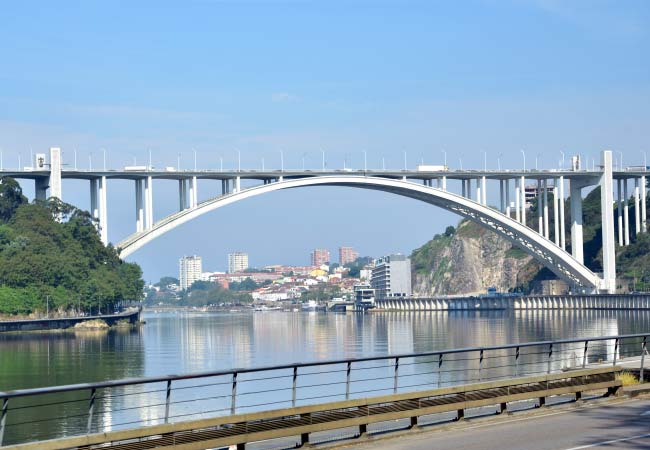
The magnificent Ponte Arrábida bridge
Stop 10 - Fluvial
The Fluvial tram stop is at the eastern edge of the parks and open spaces that line the banks of the Foz district and continue westwards to the mouth of the Douro River. The small park next to the Fluvial tram stop is the Jardim do Cálem, and this overlooks the sandbanks and marshes of the Observatório das Aves, an area popular with feeding seabirds. The 30-minute walk from Fluvial to Passeio Alegre (final stop of tram line), along the Promenade Foz do Douro, is scenic and highly recommended.
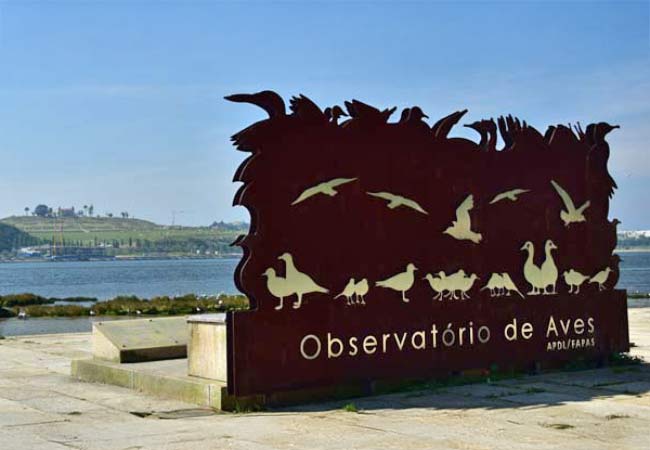
The Observatório das Aves tidal marshes
Stop 9 - Ouro
While the stop itself is unassuming, the Ouro stop is your departure point for a short ferry ride across the river to Afurada. Described by many as a peaceful fishing town completely untouched by tourism, Afurada offers an authentic glimpse into typical Portuguese daily life. The small ferry, the Flor de Gás, makes the crossing regularly.
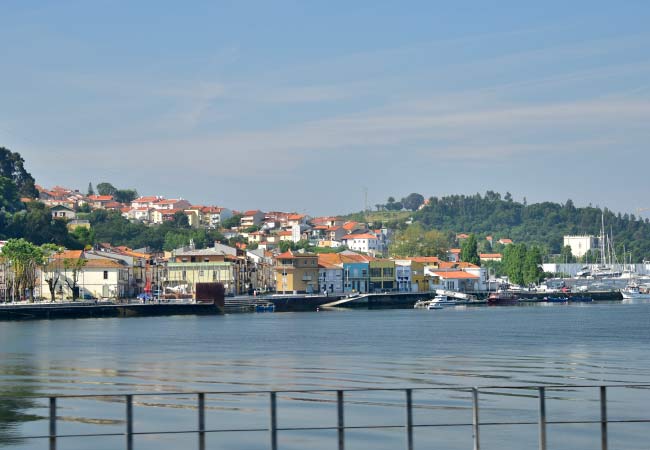
The water front of Afurada, as seen from the Ouro tram stop
The History of Porto's Linha 1 Tram
The journey on the Linha 1 tram is more than just a scenic ride; it is a trip along the exact path of Porto’s first-ever tram line. This connection to the past is what makes the experience so special.
The story begins in 1872, when the first mule-drawn trams began operating along the Douro riverfront, following the same course between the city and Foz that Linha 1 uses today. These early carriages were nicknamed "Americanos" as they were imported from American and British companies.
A major change came in 1895 when Porto became one of the first cities on the Iberian Peninsula to introduce electric trams, with the riverside route being one of the pioneers of this new technology. The trams you ride in today, the classic Brill-28 models, were built in Porto's own workshops during the 1920s and 1930s.
By the late 1940s, the city's tram network was at its largest, with over 80 kilometres of routes. However, this golden age was short-lived. From the 1960s onwards, buses were considered more modern and efficient, and the tram lines were gradually closed down. The decline was so severe that in 1994, service on the original riverside line was withdrawn completely. For eight years, no trams ran along the Douro.
Thankfully, a growing appreciation for the city's heritage led to a reversal. The opening of the Tram Museum in 1992 was a key moment, preserving the historic carriages for future generations. Between 2002 and 2003, the Linha 1 was restored and triumphantly reopened, not for mass transit, but as a heritage line. Its unparalleled scenic beauty and deep historical significance made it the perfect candidate for preservation.
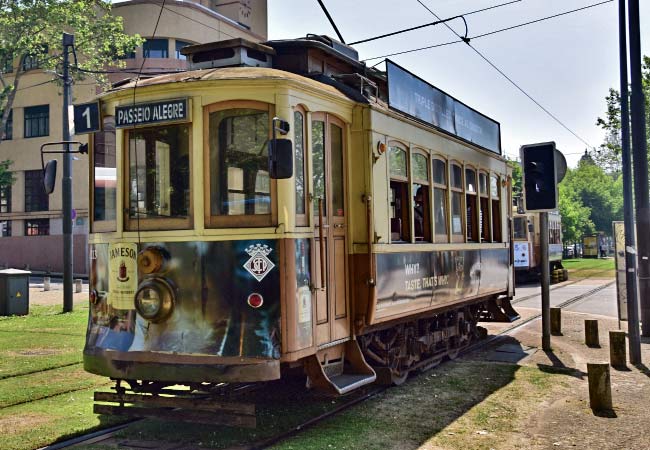
Exploring the Foz District
The tram journey is the perfect prelude to a relaxing few hours spent exploring the coastal Foz district. The final stop, Passeio Alegre, is the ideal starting point for a short and scenic walking tour.
After arriving, take a stroll through the pleasant Jardim do Passeio Alegre, heading towards the river mouth. This will lead you directly to the Farol de Felgueiras, the iconic lighthouse that guards the entrance to the Douro. It’s a fantastic spot to watch the powerful Atlantic waves crash against the long sea wall; just be prepared for the sea spray on windy days!
From the lighthouse, the waterfront promenade stretches northwards along the coast. A short walk will bring you to the Pérgola da Foz, a beautiful pillared walkway from the 1930s that has become one of the most romantic and photographed spots in Porto.
Just beyond the pergola are the sandy beaches of Praia do Ouriço and Praia dos Ingleses, along with the historic Forte de São João Baptista. The promenade is lined with numerous cafes and restaurants, making it an ideal place to stop for a coffee or a light lunch with an ocean view.
Once you have finished exploring, you can catch the tram from Passeio Alegre for the scenic return journey, or take the quicker and cheaper 500 bus back into the city centre.
If you've enjoyed our content, we'd like to ask for your support.
The internet landscape has changed, and small independent publishers like us face increasing challenges. Search engines now prioritize advertising over organic content, reducing our traffic, while AI systems increasingly copy our original work without attribution.
To help support us, please consider bookmarking our website for easy access. If you find an article useful, we encourage you to share it with friends or on social media. Equally, if you notice anything outdated or incorrect, please let us know so we can promptly address it.
We're always open to collaborating with brands, bloggers, and SEO/PR agencies who value independent creators. If you'd like to work with us or offer support, please reach out at: [email protected]
Thank you for being part of our community and helping us continue to provide valuable content in an increasingly challenging digital environment.
























